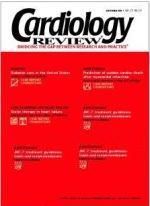NCEP update offers lower LDL goals as therapeutic option in high-risk patients
An update from the National Cholesterol Education Program (NCEP) Adult Treatment Panel (ATP) offers lower goals for low-density lipoprotein (LDL) cholesterol as a therapeutic option in very high-risk patients. The panel also suggests that drug treatment in high-risk patients with baseline LDL cholesterol levels below 100 mg/dL is a reasonable therapeutic decision.
The update to the ATP III report appears in Circulation (2004;110[2]:
227-239) and addresses potential modifications to treatment algorithms based on findings from five clinical trials published since ATP III was constructed. The NCEP update report is an “intermediate step” to address LDL cholesterol targets and LDL levels at which to initiate therapy before the completion of other large clinical trials that will shed more light on the “lower is better” hypothesis to reducing LDL cholesterol, said Noel Bairey Merz, MD, a co-author of the report and medical director of the Preventive Cardiac Center, Cedars-Sinai Medical Center, Los Angeles. “This
is a position statement modifying NCEP guidelines as opposed to a formal, new version,” she said.
ATP III set a goal of less than 100 mg/dL for LDL cholesterol in patients with coronary heart disease (CHD) or CHD risk equivalents. On the basis of the Heart Protection Study (HPS) and the Pravastatin or Atorvastatin Evaluation and Infection Therapy (PROVE IT) studies, an LDL cholesterol of 100 mg/dL does not appear to be a threshold below which no further benefit could be achieved by still more LDL cholesterol lowering, wrote the authors of the update. “Both HPS and PROVE IT indeed suggest that additional benefit may be obtained by reducing LDL levels to substantially below 100 mg/dL,” they write.
According to the report, very high-risk patients who might benefit from a reduction of LDL cholesterol to below 70 mg/dL are those with (1) multiple major risk factors, especially diabetes; (2) severe and poorly controlled risk factors, especially continued cigarette smoking; (3) multiple risk factors of the metabolic syndrome, especially triglyceride values of 200 mg/dL or greater plus non—high-density lipoprotein (HDL) cholesterol of 130 mg/dL with low HDL cholesterol (< 40 mg/dL); and (4) acute coronary syndrome. The optional LDL cholesterol goal of below 70 mg/dL does not apply to patients who are not at high risk.
In high-risk patients with baseline LDL cholesterol levels of 100 to 129 mg/dL, LDL-lowering therapy should be intensive enough to achieve a 30% to 40% reduction in LDL cholesterol levels, and not merely to attain an LDL cholesterol level just below 100 mg/dL, according to the report. This recommendation is based on the HPS finding that patients with baseline LDL cholesterol levels close to 100 mg/dL had a reduction in risk with the use of a standard dose of a statin.
Also on the basis of HPS, patients at very high absolute risk may benefit from initiation of an LDL cholesterol—lowering drug when their baseline LDL cholesterol is below 100 mg/dL (to reduce LDL cholesterol to the range of < 70 mg/dL). “HPS was an incredibly large study that demonstrated an overall mortality benefit, so, as a stand-alone study, it’s pretty good,” said Dr. Bairey Merz. “But it’s a gray area and we rarely make big decisions on one study.”
In many cases, intensive therapy may require adding a second agent such as ezetimibe, a bile acid sequestrant, or nicotinic acid to a statin, or maximizing dietary therapy (including the addition of plant stanols/sterols) combined with a standard dose of a statin.
Two trials in progress that may influence future guidelines are the Treating to New Targets (TNT) trial and the Incremental Decreases in Endpoints through Aggressive Lipid Lowering (IDEAL) trial. TNT is a 5-year study of 10,000 subjects with CHD who have baseline LDL cholesterol levels of 130 to 250 mg/dL; it is assessing whether reducing LDL cholesterol levels to 75 mg/dL will provide a greater reduction in CHD events compared with lowering them to 100 mg/dL. IDEAL is comparing atorvastatin, 80 mg daily, with simva-statin, 20 to 40 mg daily, in 8,600 men and women with a history of myocardial infarction who are eligible for statin therapy at hospital discharge.
